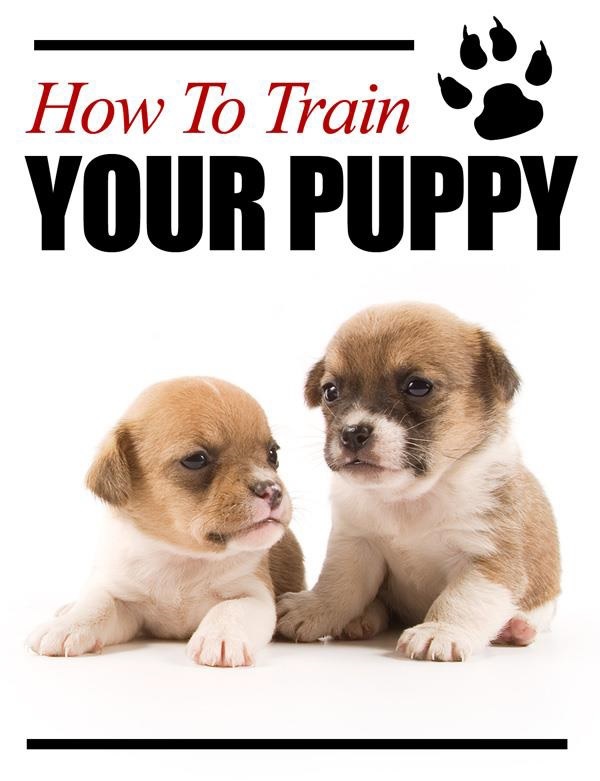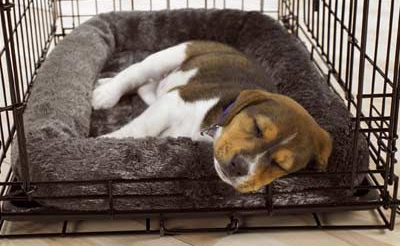First Week Puppy Training – The 6 Skills To Teach First

First Week Puppy Training – The 6 Skills To Teach First
The first week home for a new puppy is a very impressionable time. And when puppy training there are a few exercises that you should be doing with your new puppy during their first week home that will really help speed up the learning process. In this post I’m going to teach you six exercises that you can do with your new puppy that will help them become a well-behaved four-legged family member who loves to listen.
Now the first thing you need to keep in mind is that puppies have tiny bellies and they also have really short attention spans. So as you’re working with your puppy for the first couple of weeks, keep those puppy training sessions really short and take advantage of all the natural puppy training opportunities that are presented to you. For us, we’ll often portion out a little bit of the puppies food, whether it’s their breakfast or lunch or dinner or whatever and use that for puppy training. We know that we have a motivated dog to work for food because it’s their feeding time and we’re also not giving our puppy too much food over the course of the day.
Click Here For FREE Online Seminars and A FREE Course on House Training Your Puppy or Dog
1.) Response To Their Name
The first thing I want to talk about in puppy training is the response to their name. Now, before your puppy knows their name, it’s just a word, they’ve never heard it before. So we need to do something to build value on that word. The first thing we’re going to do for the first few repetitions is just say their name then reward them. And it goes a little something like this, I’ll say, Fido, then reward. Fido, then reward. Fido, then reward. Now I’m making it really easy for Fido and I’m building value on that word. But in just a few sessions you’ll be able to make it a little bit more challenging for your puppy.
2.) Response To Their Name With Distractions
Now here’s where we’re going to increase the challenge of that response name a little bit for your puppy. I want you to wait for a moment when your puppy’s distracted. This probably won’t take that long because puppies are naturally pretty distracted by all of the things in their environment.
So have a few treats in hand. When your puppy gets distracted, call their name and put a treat on their nose, turn them in toward you and reward when your puppy is facing you. That way they’re gonna start to understand that every time they hear their name they need to turn in toward you. And I’ll show you how it goes, kind of like this. I’ll get her distracted. Fido. I’ll turn her toward me. Yes, good girl. So do that a few times. And I’ll try it again. Hippy. Turn her toward me. Yes, good girl, very nice. Fido. Turn her toward me. Yes, good girl. Fido is starting to understand that every time she hears her name she needs to turn toward me because something good is about to happen.
Now something you need to keep in mind is that when you’ve got your puppy at home avoid using their name all the time unless you’re training this exercise. The last thing you want to do is water down how important that word is.
So we use something like, “Here, pup, pup, pup.” or “Here, here, here.” or something like that until we’re ready to train our puppy’s name and that way that name is always something valuable. Another thing that we like to do for the response to name training is after you’ve had a few successful repetitions of turning your puppy away from a distraction, you and a partner will sit at either end of a hallway and one person will hold the puppy and get them really excited. The other person will have some food and they might use some exciting language to really keep the puppy’s focus and keep their attention. Then they’ll call the puppy’s name and that partner will release the puppy down to them. It really builds motivation and drive for an excited response to their name.
Click Here For FREE Online Seminars and A FREE Course on House Training Your Puppy or Dog
3.) Accustomed to Their Collar
In those first few days of your puppy coming home, make sure you have an opportunity to get them accustomed to their collar. Now, when you pop your puppy’s new collar on for the first couple times, they may itch and scratch at it and it’s just them getting used to it, it’s like you wearing a new pair of glasses or something like that. But it’s going to be important down the road for you to keep your puppy safe, keep your young dog safe.
Make sure that you can have a collar on them safely and you can clip a leash to it. And even more importantly, be able to put on a house line if needed.
4.) Get An Interactive Toy
Puppies explore the world with their mouths, so a great way to engage with them is by using something like an interactive toy. I’ve got a Bungee Tug. The other great thing is for those of you who want to do dog sports in the future or you want your dog to have a great retrieve or a fetch.

Having a toy driving your dog is going to be really important. The other great thing that you can start doing with your puppy is laying the foundation for their “Stop”. By engaging with the toy and then presenting some food, Fido’s gonna start to learn what the stop command means. So let’s get started. With your puppy I want you to get that interactive toy and animate it on the ground.
Make it look really exciting, so that your puppy get gets interested in it. So when your puppy gets a hold of that toy and it seems really excited about it, you’re gonna say, “Stop” and then you can present the food.
We’ll try it one more time to get her even more excited. Ready? Tug, tug, tug, tug, tug. You can see how much she loves playing this game. I’m gonna tell her “Stop” and then present the food. The great part about using these interactive toys is that not only does your dog have fun playing with the toy but they begin to understand that the toy is only fun when they get to play with it with you.
Click Here For FREE Online Seminars and A FREE Course on House Training Your Puppy or Dog
5.) Luring Exercises
Now another exercise to always do with our young puppies are some luring exercises. That’s simply teaching our puppy to follow food. Now following food is going to be really helpful if you want to train your dog to do any tricks or you want to teach your puppy to walk on a loose leash. It’s even helpful for things like the down and sit command. But with our puppies, as they’re eight, nine, 10 weeks old, we’re just going to lure them around a little bit. And when they really commit to that food, we might make it as challenging or as easy as your puppy is capable of following.
We’re just going to lure them around, we’re not gonna give them any commands, we’re not going to ask them to do anything. All they need to do is follow that food. Now if your puppy gets distracted easily or doesn’t like, seems to not be that interested in the food. You might need to reward them a little more frequently or pick a little higher value food reward.
Now don’t make it too tough, you just want to maybe turn your puppy a little bit. Yes, and reward. You might want to… Let’s see if I can get Hippy Shake to just move around. She went into a down position. I can, yes, reward her. We’re not really looking for anything specific but we definitely want our puppies to follow this food. Okay, these luring exercises are really going to help you down the road with some of your obedience training.

6.) A Positive Association With Their Crate
Now we often talk about the value of a crate when you’re training a puppy. Whether you’re using it as a safe place for your puppy for when you aren’t able to supervise them. Or you’re using it as a limited space area so that you can speed up their potty training. The crate is a really useful tool. Now, something we need to do with our puppies is have them build a positive association with that crate. And a great way to do that is by feeding your puppy each of their meals inside the crate. So I’m just gonna tell Hippy Shake, “Okay” and then I’m gonna put her dinner inside here.
So by doing these exercises in the first few weeks that you bring your puppy home, you’re really starting to lay the foundation of learning for your puppy. You’re also beginning to understand how they like to learn. This can be a really helpful tool when you’re training them.
Click Here For FREE Online Seminars and A FREE Course on House Training Your Puppy or Dog
As found on Youtube
Click Here For FREE online Seminars and A FREE Course on Dog House Training
